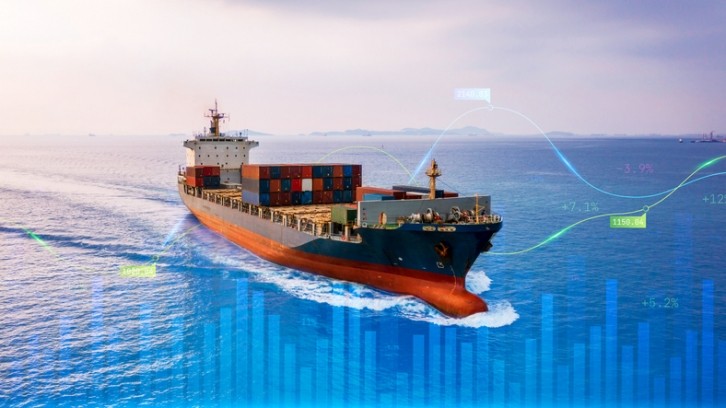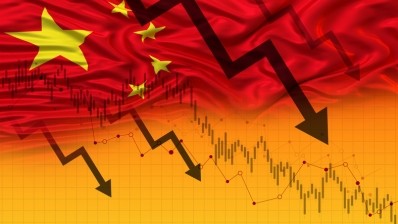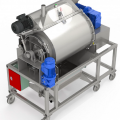Feed additive tracker: Freight costs could soar to pandemic heights

Currently, exports from China to many destinations have elevated freight costs of 35-50 cents per kilogram of raw materials. This significantly impacts lower-priced goods like Lysine sulfate, which has an FOB price of about US$0.70/kg, as well as Lysine Hcl, Methionine, Threonine, Vitamin C35%, and others, according to Stefan Schmidinger, chief economist, markets and strategy, Kemiex.
“The Freightos FBX 11 short-term rate for sailings from China/East Asia to North Europe stands at US$7,114/FEU, excluding all surcharges. This is around 22% higher than the January Suez crisis peak and eight times higher than rates in October 2023, prior to the first ship attacks.”
Shipping volume through the Panama Canal has nearly recovered from disruptions due to low water levels of the past seven months, while transit volume through the Red Sea, currently about 60-70% below last year's level, is still being re-routed via the much longer Cape of Good Hope.
However, global port congestion has hit an 18-month high amid record port throughput and equipment shortages, causing delays in Asian ports such as Qingdao, Guangzhou, Singapore, and Port Klang, finds Kemiex.
“Additionally, German union Verdi has unexpectedly announced port strikes this week, compounding the situation despite CMA CGM, COSCO, MSC, and other carriers adding new temporary transpacific and Asia-Europe services,” adds Schmidinger.
Amino acid and vitamin supply
Despite worsening container slot availability and loading times, many spot contracts are still being closed, he notes. China's total feed production decreased by -7.5% year-on-year in May 2024, with year-to-date figures reflecting a similar trend, indicating that more raw materials may be available for export.
“Year-to-date demand from overseas for Chinese-origin goods has increased by 27% for Lysine, 45% for Threonine, and 29% for Vitamins E, with Methionine demand more than doubling. Some producers and distributors claim to be sold out for August shipments.”
Lysine and Threonine prices slightly rose this week ex-China, and more significantly in Europe, mainly due to mark-ups from freight. In Europe, Vitamin B12 1% prices are hovering above €50/kg, with lower prices for expiring stocks.
“Chinese Vitamin C producers plan longer maintenance shutdowns this year to address overcapacity, with many end markets covered by low-priced contracts into 2025. Tianxin has reduced and stopped offers for Vitamins B1 and B6. Selected producers aim to sell Vitamin E 50% in China at US$10-10.50, above current levels. Notices from key manufacturers at CPHI Shanghai indicate upward price risks for Vitamins D and K3.”
Capacity expansions
Upcoming expansion projects include Golden Corn's plan to expand Lysine production by 200,000 tons, Huaheng's plan to add up to 70,000 tons of various amino acids, and NHU's plan to add 5,000 tons of Vitamin K3 in phases.
Zhenhua plans to nearly double production to 2,000 tons per annum, and NHU is optimizing to produce 70,000 tons more of DL-Methionine, and 180,000 tons of Methionine Hydroxy analog in partnership with Sinopec, reports Kemiex.
Potential trade war
In a blow to ever-declining European swine populations and animal nutrition and health markets, China’s Ministry of Commerce just announced it was initiating an anti-dumping investigation into imports of pork and pork by-products originating from the EU. The move follows EU measures on imports of electric vehicles, lysine, and other goods from China.
But the last thing the struggling European pork industry needs right now is a potential trade war. “The EU27 was nearing recovery from a significant decline in Chinese demand in recent years, following China's restoration of its own herds after the African Swine Fever (ASF) crisis,” comments Schmidinger.
Euractiv reports that EU Commission spokesperson for trade, Olof Gill, refutes the dumping allegations. He said the EU executve would closely monitor the Chinese proceedings and that all subsidies under the bloc's common agricultural policy (CAP) comply strictly with World Trade Organisation (WTO) obligations.
China imported 1.54m tons worth US$3.5bn from the world in 2023, of which 47% originated from the EU27, with 26% coming from Brazil. Digging deeper, 25% of China’s pork imports from the EU were from Spain, 8% from the Netherlands, 7% from Denmark, and 4% from France, as per Kemiex data.
















